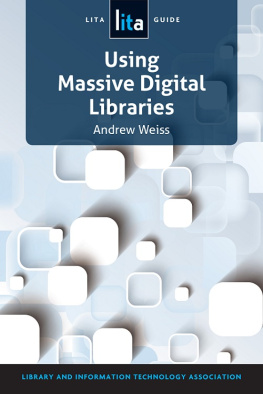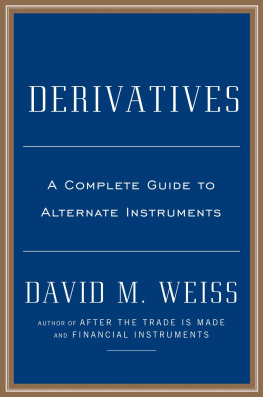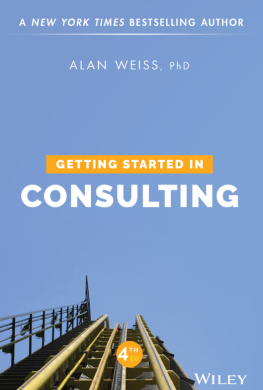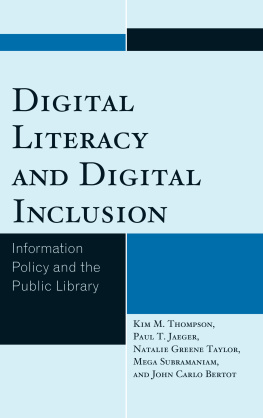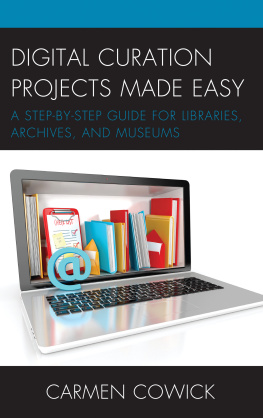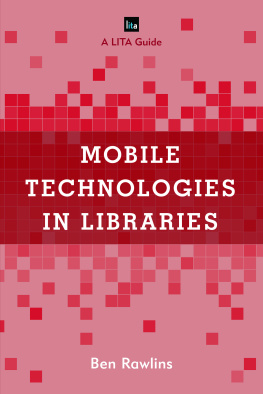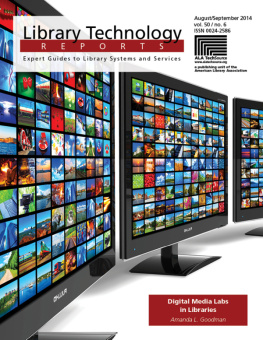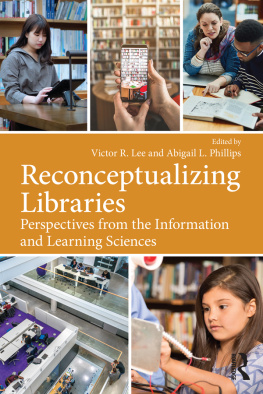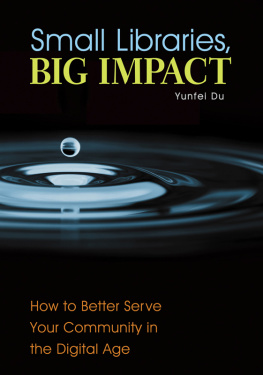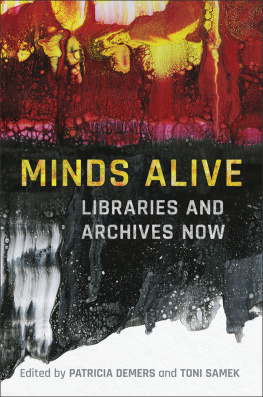
ALA TechSource purchases fund advocacy,
awareness, and accreditation programs
for library professionals worldwide.
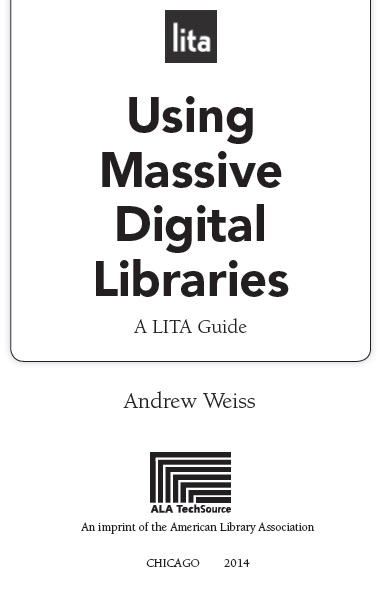
Andrew Weiss is the digital services librarian at the Oviatt Library, California State University, Northridge. His professional areas of expertise include scholarly communication, digital repository development, and open access advocacy. His past research has focused on digital libraries, digitization, and open access publishing. He also has great interest in the culture, literature, and history of librarianship in Japan. He earned his masters degree in library science from the University of Hawaii at Manoa.
Ryan James lives in Honolulu and works for the University of Hawaii at Manoa Libraries. He is pursuing a PhD in Communications and Information Science.
2014 by the American Library Association.
Printed in the United States of America
Extensive effort has gone into ensuring the reliability of the information in this book; however, the publisher makes no warranty, express implied or, with respect to the material contained herein.
ISBNs: 978-0-8389-1235-5 (paper); 978-0-8389-1973-6 (PDF); 978-0-8389-1974-3 (ePub); 978-0-8389-9624-9 (Kindle). For more information on digital formats, visit the ALA Store at alastore.ala.org and select eEditions.
Library of Congress Cataloging-in-Publication Data
Weiss, Andrew, 1971
Using massive digital libraries : a LITA guide / Andrew Weiss. First edition.
pages cm. (LITA guides)
Includes bibliographical references and .
ISBN 978-0-8389-1235-5 (alk. paper)
1. Digital libraries. 2. LibrariesSpecial collectionsComputer network resources. 3. LibrariesElectronic information sources. 4. Scholarly electronic publishing. 5. Scholarly web sites. 6. Digital librariesCollection development. 7. Google Library ProjectCase studies. I. Library and Information Technology Association (U.S.). II. Title.
Z4080W43 2014
025.042dc23 2014009541
To Akiko and Mia
Contents
T his book is a study of provocation and reactionism, futurism and its shifting paradigms, foretellings and forebodings, and above all else an examination of new worlds. In the past ten to fifteen years modern societies have undergone major shifts in how they accumulate, produce, and distribute information. Increasingly, the Internet is the primary source of our information, entertainment, news, gossip, and social interaction. What one might call legacy media (e.g., print newspapers, television, radio, telephony, and even aging digital formats like Zip drives, MO discs, DVDs, and the like) have endured some of the more visible challenges to their methods of creating and distributing information, and to the business models of the companies that distribute them. Other institutions have been equally affected, but in ways that are less visible or tangential to their core missions.
This book is an attempt to explore what librariesone of the many institutions affected by these changeswill look like as the twenty-first century progresses. It is impossible to address all the pertinent issues in one volume, and no scholar of librarianship would claim to fully understand all the changes happening. Yet the pillars that support the library as one of civilizations big ideas are weaker now than they have ever been, having been eroded from external and internal forces that are economic, ideological, and legal in nature.
It is left to us to look to the far boundaries of current traditional library models and choose a newly developing area of library and information science that shows the promise of change, for good and for ill, in the field. It is hoped that the exploration of one such narrow area will help provide insight into the possible wider changes that are likely to come in future decades.
This book examines what Ryan James and I in previous studies have together defined as massive digital libraries (MDLs). This term is still unsettled, having been coined only recently. However, the need for new terminology hinges upon the desire to describe what we believe to be a new class of digital libraries, which, though we admit are rooted in past models, are flourishing and will only grow larger and more influential.
A massive digital library is a collection of organized information large enough to rival the size of the worlds largest bricks-and-mortar libraries in terms of book collections. The examples examined in this book range from hundreds of thousands of books to tens of millions. This basic definition of an MDL, however, is in some ways insufficient. It describes what an MDL is in some ways but says nothing about how it is similar and dissimilar from more traditional libraries. What we can use it for, then, is as a starting point for discussion. As the book progresses this definition is refined further to make it more usable and relevant. This book will introduce more characteristics of MDLs and examine how they affect the current traditional library.
The creation of MDLs has led to what might be called an existential crisis in librarianship. Some might say that MDLs will eventually lead to the end of traditional libraries. While this author agrees with this in part, I do not necessarily share the doom and gloom of some commenters.
There are very few traditional bricks-and-mortar libraries that can be lumped together into a single group with just one set of uniform characteristics identifying what the library should be. The library is instead a conceptthe big ideathat has been implemented in many different ways for thousands of years. The newness of MDLs gives us a chance to critically examine these new entities to see how they fit within traditional librarianship while also allowing us to reexamine what a library is now and how it might change in the future.
MDLs are here to stay. They are part of the future. They are provocative on multiple fronts, challenging hidebound assumptions about the librarys centrality as a space for study and the housing of physical books and volumes. If the concept of the library and its intellectual underpinnings are to persist in the foreseeable future, they will need to be adapted to the reality of current conditions to avoid diminishment. For those who believe such changes spell doom to the library as we know it, we can only suggestwith but the tiniest tip of the tongue in our cheekthat the proverbial canary may just as easily become the canard in the coal mine.
Some readers may disagree with the ideas and frameworks presented in this book. That is a good thing. We would prefer to provoke a spirited discussion of the topic in the hopes that MDLs gain both greater respect for their positive aspects and astute criticism for their missteps and overreaches.
We hope that readers will find that the need for the term MDL is here, as well as become more aware of the strengths and weaknesses of MDLs as digital information tools. Once librarians are able to understand what they are, how they function, and how they are created and aggregated, they can better assess them for multiple purposes. It is hoped also that those reading the book are perhaps inspired to develop new ways of researching MDLs. We hope a new generation of librarians will foster a new approach to these tools and consider developing their own.
We neither despair about the future nor approach it with naive enchantment. Our approach is based in curiosity. We wish to examine where we are, how we got here, and where we might be going. The goal is to explore the history of MDLs, what they currently are, and issues their creation raises for library science today. As for the future of libraries as a whole, we leave the writing of speculative fiction to others more imaginative than ourselves.
Next page
